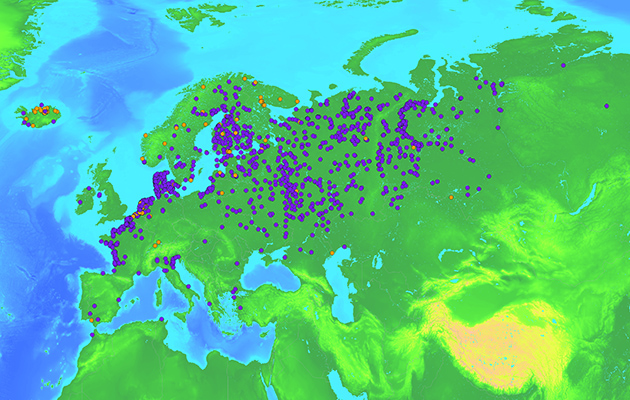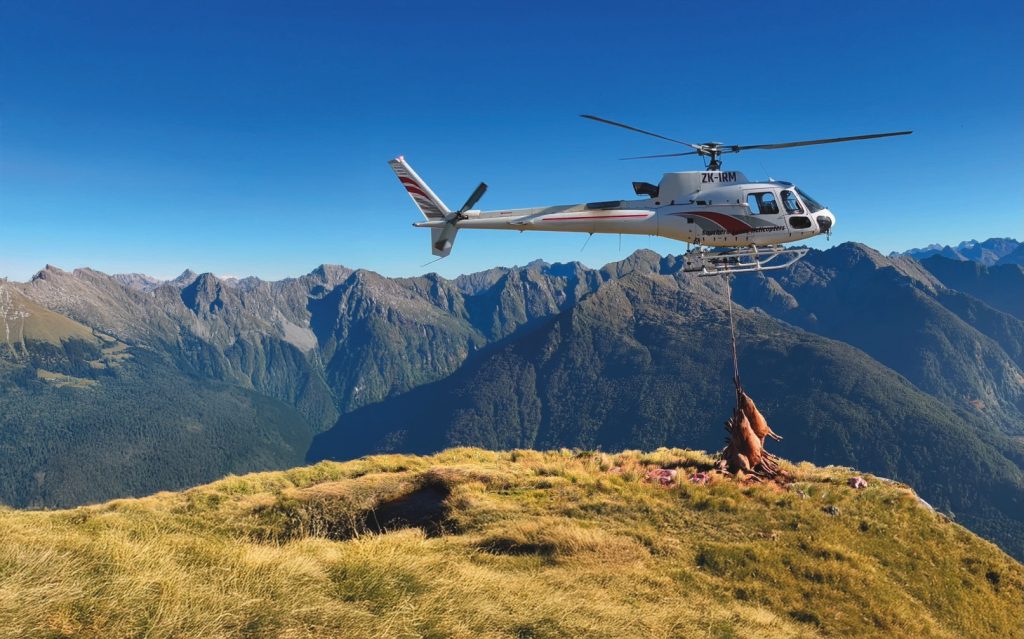Win CENS ProFlex DX5 earplugs worth £1,149 – enter here
The way of the wigeon
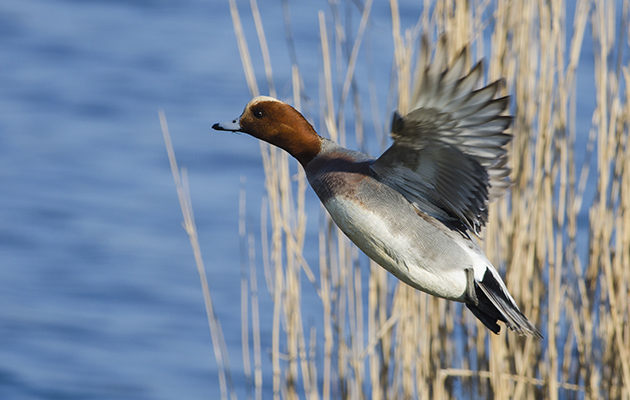
Sympathetic management of a local patch may be an important contribution to conservation but sometimes action has to be taken on a much larger scale. For instance, to look after populations of wintering duck, such as wigeon, the scope has to be international. This is where overseas grants from the charity set up by BASC the Wildlife Habitat Charitable Trust (WHT) play an important role.
Wintering wigeon come from a variety of populations. A relatively small number of birds — up to 500 pairs — fly here from Iceland, where perhaps 6,000 pairs breed, but most of our 450,000 winter visitors arrive from the east in autumn.
We have a good feel for the timing of the species’ migration, thanks to a project funded in the aftermath of the last H5N1 bird flu crisis. Scientists working for the British Trust for Ornithology (BTO) looked at the patterns of movements across Europe so that government vets could assess whether outbreaks were connected. For wigeon, there is virtually no direct link between Switzerland and the UK, for instance, but an outbreak in the Baltic in October might well involve birds that are on their way to the UK. Such information allows early decisions to be made about bio-security in poultry facilities and to target areas where extra surveillance of wild birds might be advisable.
Three million birds
Wigeon breed across the whole land mass of Europe and Asia, from the Atlantic to the Pacific, and spend the winter months in a broad swathe from West Africa to Japan. BirdLife International estimates that the population is about 3million, so recent declines — noted locally, nationally and internationally — are not sufficiently worrying to put the species on to any international watch list.
According to results from the Wetland Bird Survey, run jointly by the BTO, the Joint Nature Conservation Committee (JNCC) and the RSPB, and backed by the Wildfowl & Wetlands Trust (WWT), numbers in the UK peaked in 2005-06, having quadrupled in the previous 40 years. Counts have declined in the past 10 years, perhaps by as much as 20 per cent, though it’s hard to know how much of these perceived losses might represent “short-stopping” — in warmer years more birds are able to spend the whole winter on the continental side of the North Sea.
Wigeon may not be in serious decline — like cuckoos or curlews — but this is an important quarry species in many countries. Recent falls in numbers are, therefore, of concern and timely conservation action is important, especially when there’s an opportunity to improve habitats in key migration stopover points. That’s where the Wildlife Habitat Charitable Trust (WHCT) comes in. The trust, set up by BASC, recently donated £24,000 to a conservation project to map and improve habitats on sites in Belarus and Lithuania, which are crucial to restoring declining wigeon numbers.
The focus for this new conservation work are the vast areas of the Nemunas river delta between Lithuania and Russia, which holds up to 30,000 wigeon, and the Pripyat river floodplain in southern Belarus, on which counts of up to 150,000 have been recorded.
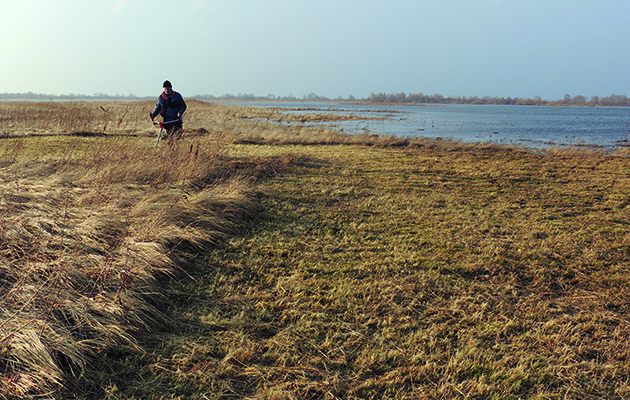
Habitat restoration work on the floodplain of the Pripyat river, where 150,000 wigeon have been recorded
Staging site
The Nemunas is the key stopover area for wigeon migrating in spring from the UK to their breeding sites in the northern part of European Russia. Wigeon from a wide range of countries migrate through Belarus, which is farther east, and the Pripyat floodplain is a key staging site for birds returning to breeding areas in western Siberia with duck having been counted in the low-lying mosaic of open meadows, oxbow lakes, raised bogs and mires. this is an ideal habitat for migratory waterfowl and waders, including white- fronted and greylag geese, mallard, pintail, teal, breeding ruff and the globally threatened great snipe.
The conditions that birds encounter on the seasonally-flooded meadows of the nemunas delta and the Pripyat floodplain affect the annual reproduction success in the arctic tundra, according to Tony Fox, professor of waterbird ecology at Aarhus university, in Denmark. these open floodplain habitats are rapidly becoming overgrown with shrubs and bushes, due to the lack of traditional small-scale cattle grazing and hay-making, making the areas less suitable for migratory duck populations and hence having an impact on breeding numbers.
This WHCT-funded project, which was jointly submitted by Dr Saulius Svazas and Dr alexander Kozulin of Vilnius and Minsk universities, focuses on identifying key wigeon sites and restoring open-meadow habitats. This will be achieved by working with government agencies in Lithuania and Belarus to set up demonstration sites and engage with local farmers, to show them how to restore grazing regimes and to raise awareness of the conservation importance of these areas. This project has been recognised as a good example of its kind by the chairman and delegates of the recent meeting of the african-eurasian migratory Waterbird agreement held in Bonn, Germany.
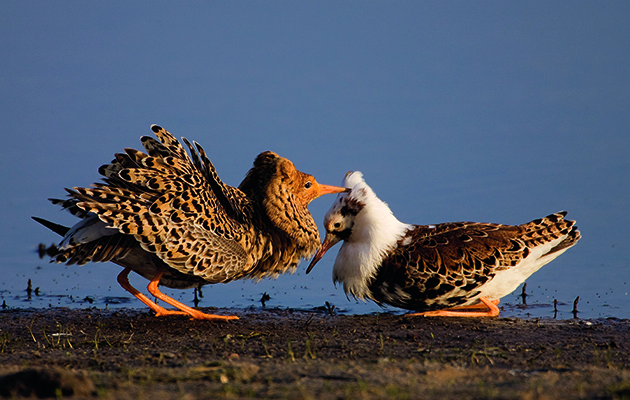
A displaying ruff in the floodplain of the Pripyat river near Turov in southern Belarus
Tim Russell, the BASC’s director of conservation, said: “The money the WHCT has spent on flyway conservation projects is important not only to people who shoot, but also to people that just like looking at birds. these projects show that shooters really do care about conservation.” This is an extension of long-term support for the flyway; over the past eight years, the WhCt has distributed more than £60,000 to projects in Lithuania, Russia and Belarus which aim to benefit wildfowl.
When April turns to May, many of our wigeon will be in these important staging areas on the Baltic coast and in Belarus, or already on their way farther north and east. These birds might be only in the UK for a few months but WHCT provide international support for them all year. By creating better feeding conditions for wigeon, as they prepare for the last stage of their journey, the trust is helping to improve the breeding potential of the species, which should bolster the number of first-year wigeon returning at the end of the summer.
Where wigeon travel
The map below shows just how important our estuaries, washes and river valleys are to wigeon from Russia. Orange dots indicate birds ringed abroad and found in Britain and Ireland, while purple dots show the recoveries of birds that were ringed within these islands. Though the movement is very much east-to-west each autumn, there are also recoveries of BTO-ringed wigeon along the Atlantic coast and in countries such as Greece, Turkey and Italy. Most of the French and Spanish recoveries represent birds that have moved out of Britain in particularly cold weather, while Mediterranean records are of birds that spent at least one winter here and travelled in a different direction on a later autumn migration.
Related Articles
Get the latest news delivered direct to your door
Subscribe to Shooting Times & Country
Discover the ultimate companion for field sports enthusiasts with Shooting Times & Country Magazine, the UK’s leading weekly publication that has been at the forefront of shooting culture since 1882. Subscribers gain access to expert tips, comprehensive gear reviews, seasonal advice and a vibrant community of like-minded shooters.
Save on shop price when you subscribe with weekly issues featuring in-depth articles on gundog training, exclusive member offers and access to the digital back issue library. A Shooting Times & Country subscription is more than a magazine, don’t just read about the countryside; immerse yourself in its most authoritative and engaging publication.






